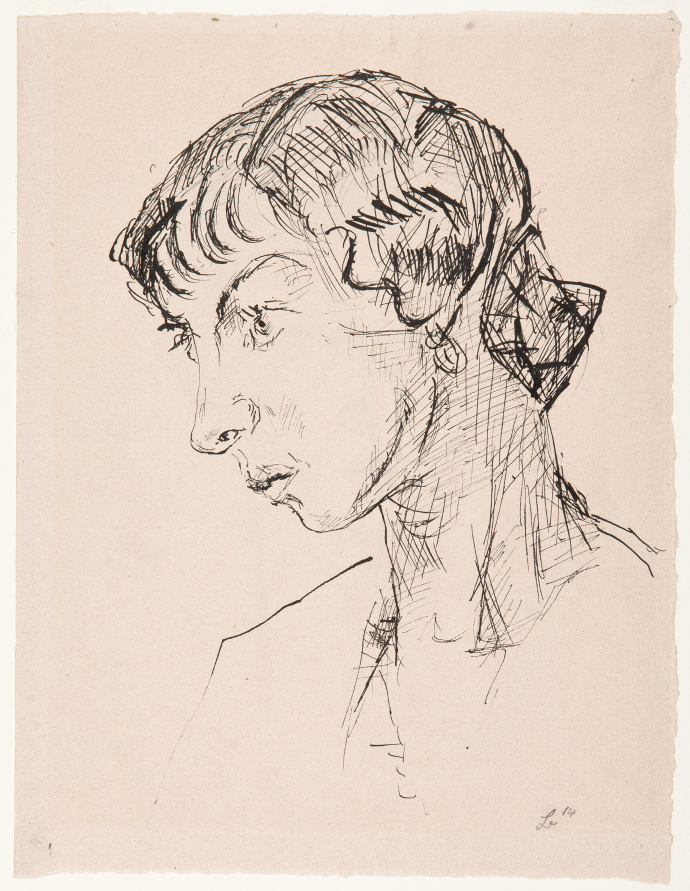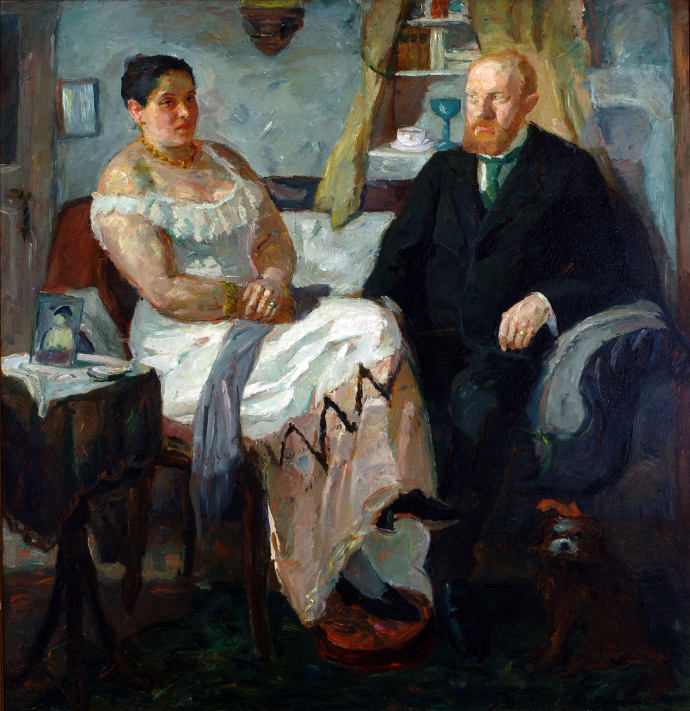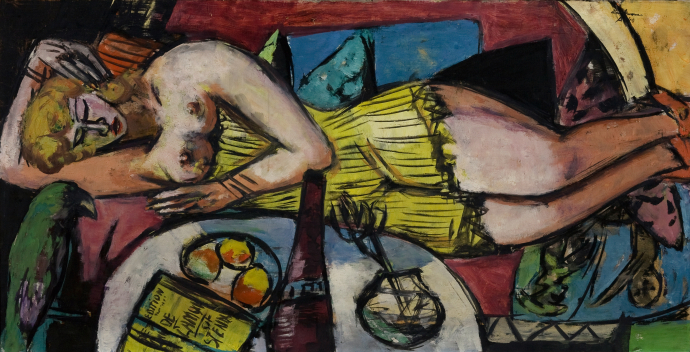Jugendstil-Bau > Ebene 1 > Galerie 10
Einstieg
»Fastnacht« vereint drei Motive, die Max Beckmanns Gesamtwerk durchziehen: das Selbstporträt, das Paarbildnis und die Fastnachtsdarstellung. Beckmanns zweite Frau Mathilde Kaulbach, vom Künstler liebevoll »Quappi« genannt und hundertfach gemalt, ist in der rechten Bildhälfte als attraktive Tänzerin dargestellt. Sie sitzt selbstsicher mit übergeschlagenen Beinen und betrachtet aufmerksam etwas, das unseren Blicken verborgen bleibt. Das Alter Ego des Künstlers, der sich auch in anderen Porträts in einen Clown und Narr verwandelt, zeigt sich hinter ihr in akrobatischer Verrenkung. Sein Gesicht ist durch ein Tuch verhüllt, doch trotz seines Kunststücks kann er die Aufmerksamkeit seiner Partnerin nicht auf sich ziehen.
Beckmann heiratet Mathilde Kaulbach im September 1925. Im selben Jahr erscheint sie in »Fastnacht« erstmals in einem seiner Bilder und wird zum Bestandteil seines Welttheaters, das vielfach mit Verkleidungen, sozialen Rollen und religiösen oder mythologischen Symbolen spielt. Beckmanns Gemälde zeigt aber auch zwei Arten, der Welt zu begegnen. Während sich der Narr verschließt und nur durch einen schmalen Spalt seine Umgebung betrachten kann, setzt sich Quappi den Gegebenheiten selbstbewusst aus.
Einstieg
»Carnival« combines three motifs that appear throughout Max Beckmann’s oeuvre: the self portrait, the double portrait, and the carnival. Beckmann’s second wife, Mathilde von Kaulbach, whom he lovingly named “Quappi” and painted hundreds of times, is depicted as an attractive dancer on the right side of the picture. She sits self-confidently with crossed legs, attentively observing something which lies outside our field of vision. The artist’s alter ego, who also appears in the guise of a clown or a fool in other portraits, is shown behind her performing an act of acrobatic contortion, his face concealed by a cloth. Yet despite his stunt, he is still unable to attract his partner’s attention.
Beckmann married Mathilde in September 1925. She appeared in »Carnival« the same year—the first time she featured in one of Beckmann’s paintings—and became a component of his world theatre, which plays with a diversity of costumes, social roles, and religious or mythological symbols. But Beckmann’s painting also shows us two ways of encountering the world. While the fool shuts himself off and can only observe his surroundings through a narrow slit, Quappi self-confidently engages with reality.
Kunsthalle Mannheim


![Bildnis der Tänzerin Sent M´Ahesa Signatur: im Stein o.re.: "20.4.21 bei Weidner // von Beckmann", u.mi. in Bleistift: "Beckmann": Beschriftung recto: u.mi. in Bleistift: "Probedruck": Beschriftung verso: o.li.: "1661 [alte Inv.nr.]"; u.li.: "N841"](/sites/default/files/styles/700_breit/public/digitalisate/G1573_MOS_2018.jpg?itok=rEdbYKTq)



